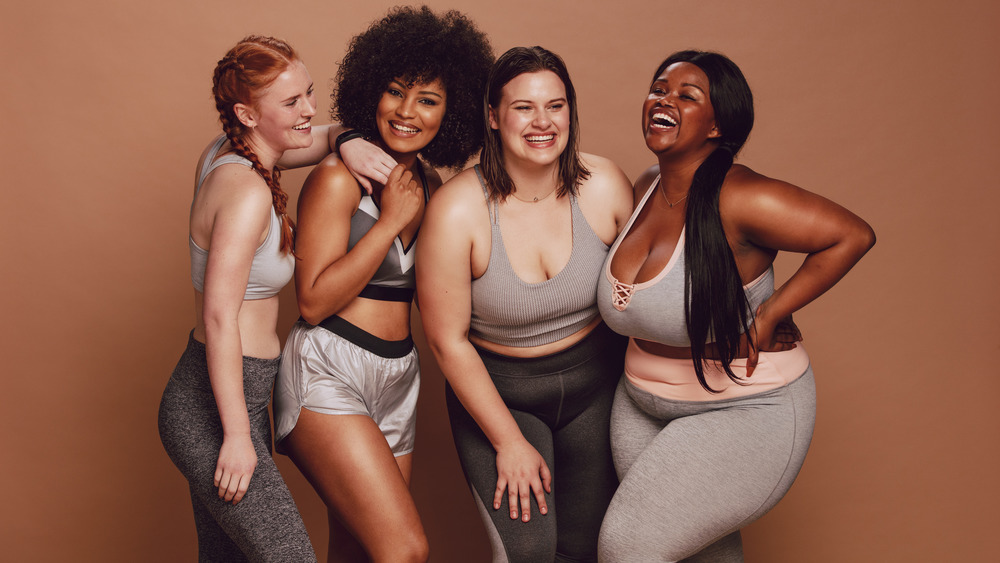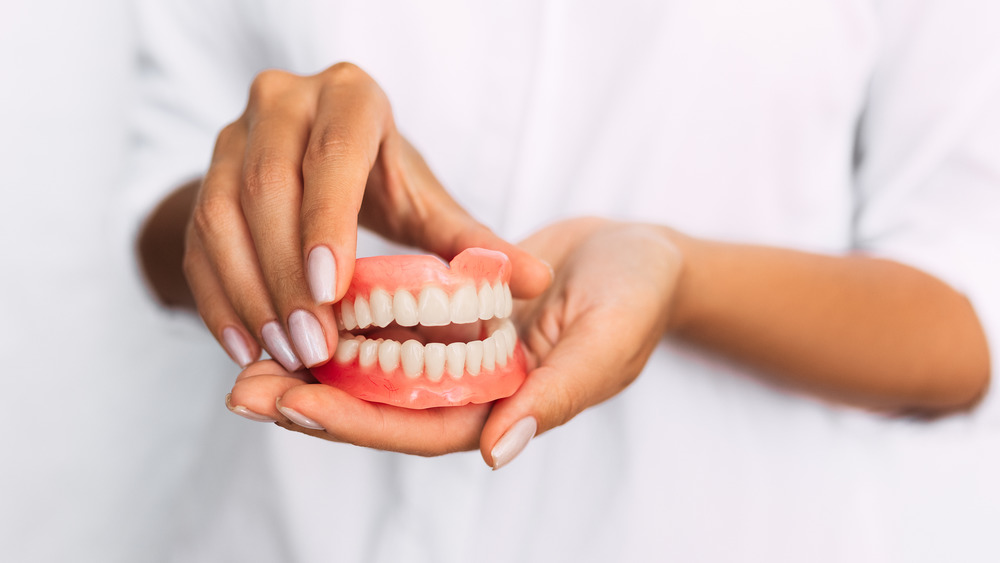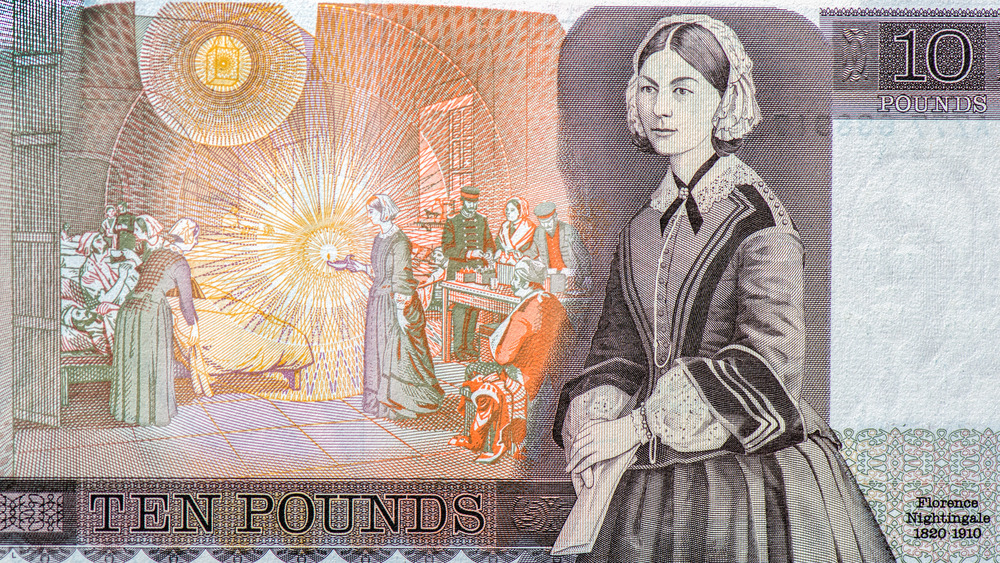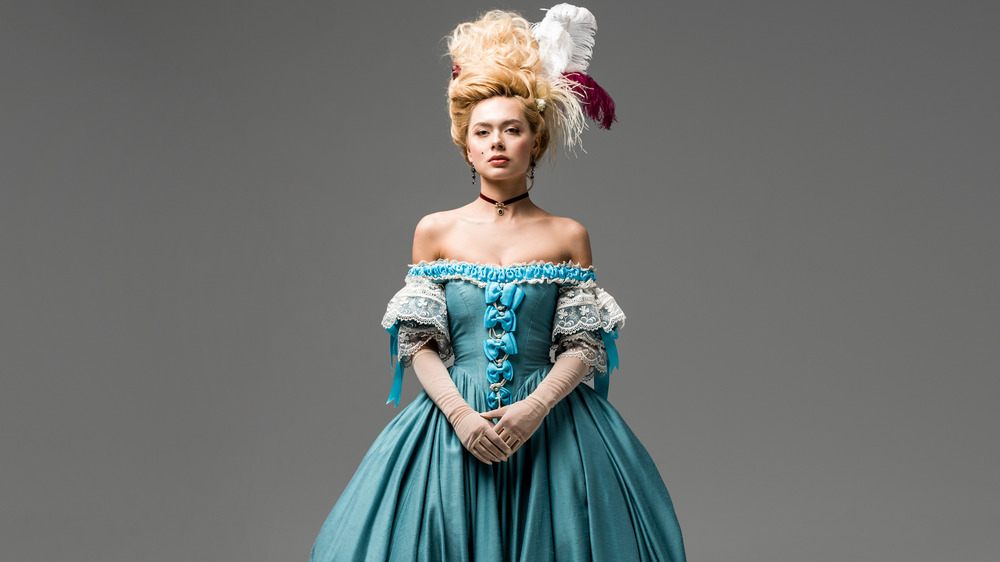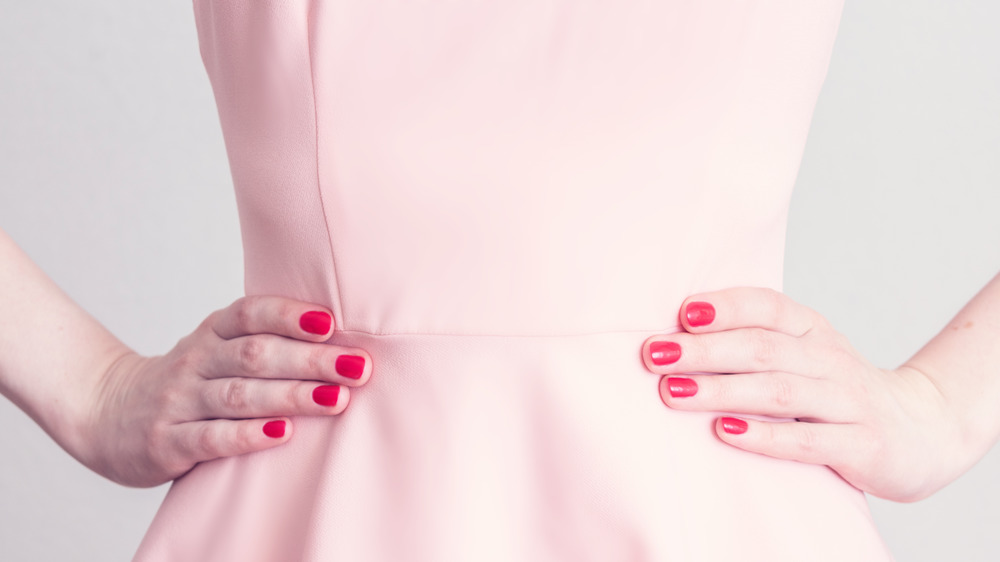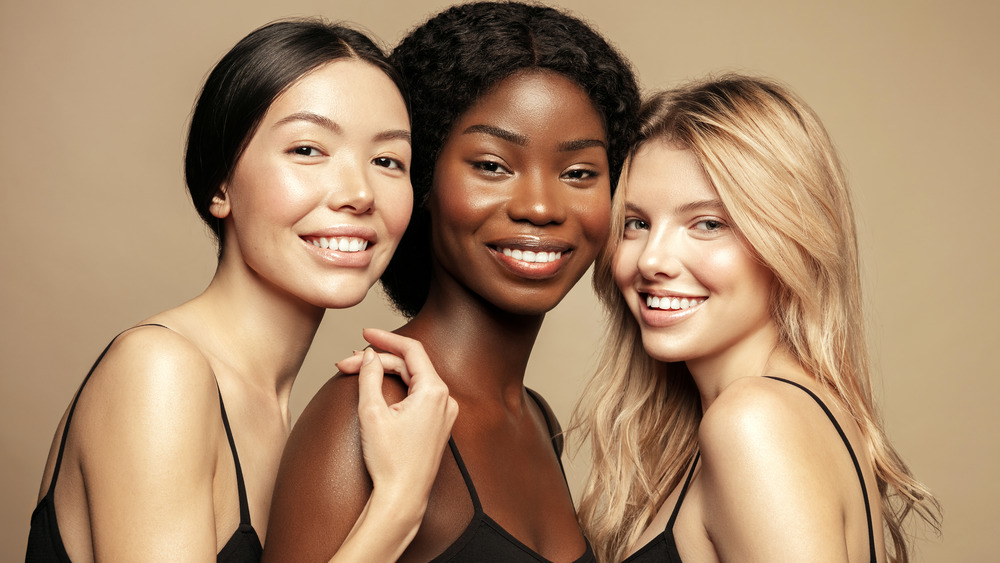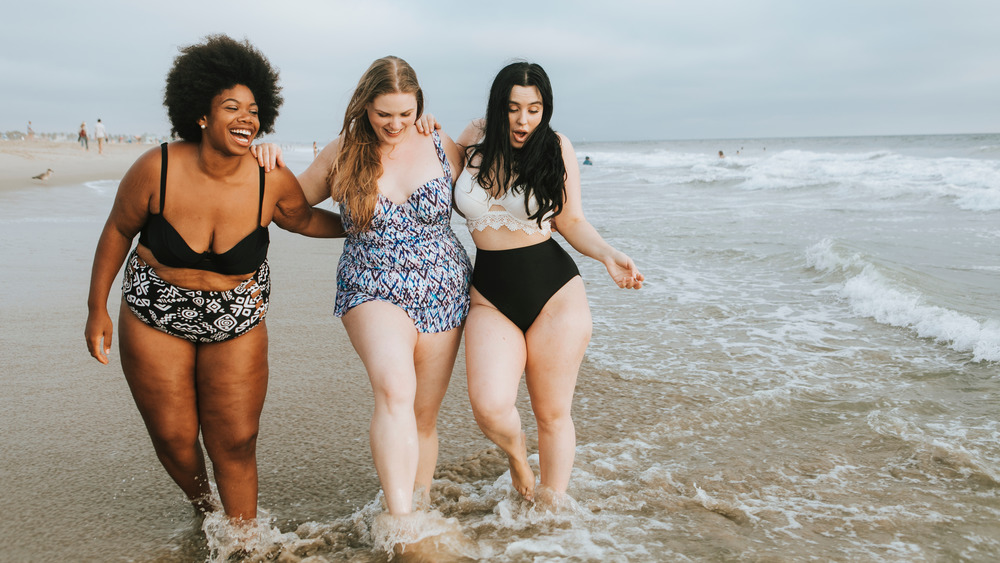What 'Healthy' Body Standards Have Looked Like Throughout History
Your body type can reveal a lot about your overall health, according to Penn Medicine. In fact, even the overall fat distribution in your body that gives you shape can suggest a lot about your health.
When you think of what a healthy body looks like today, you might automatically think of a physically fit, muscular person with clear skin, a full head of hair, and a beautiful smile. While these physical indicators are certainly signs of good health these days, the notion of what it meant to be "healthy" hasn't always stayed the same. In fact, over the centuries, healthy bodies have looked very different. Society's idea of what makes a body a healthy one has changed and evolved as human's diets, the environment, and science have also all developed.
Fad diets and fashion trends (think: corsets) that manipulate people's bodies have come and gone. Gender role expectations that impact people's bodies have changed over time. And different cultures have accepted different types of bodies as "healthy" at different times. Curious? Here's what "healthy" body standards have looked like throughout history.
The ancient Romans prioritized good dental health
Dental health isn't what it once was — and we're certainly thankful for that. Without toothbrushes, toothpaste, floss, or mouthwash to keep up with proper dental hygiene practices, it's a miracle anyone was able to maintain good dental health. But the ancient Romans had exceptionally healthy teeth, somehow, as evidenced by excavations at Pompeii, according to bioarchaeologist Kristina Killgrove, who contributed to Forbes. That was thanks to a nearly no-sugar, mostly Mediterranean diet. In other words: They ate a lot of fresh fruits and veggies, lean proteins like fish, lentils, and chickpeas, olives and olive oils, and whole grains.
After all, Pompeian kitchens were rather simple, according to the Western Australian Museum. These kitchens were nothing but basins to hold water for cooking and cleaning up the "dishes." Sometimes, the basin supported tables to prepare the food, too. Overall, they were minimalistic but practical and functional enough to cook healthy meals that didn't cause cavities. Of course, not everyone was fortunate enough to eat this healthy but, those who could certainly benefited in regards to their dental health.
For the ancient Greeks, the more muscle, the better
Ancient Greeks seemed to be big on muscles — though they weren't necessarily all as muscular as history books would have us believe. After all, ever notice that Greek armor had abs? According to Vox's interviews with Hans Van Wees, a professor of ancient history and the author of Greek Warfare: Myths and Realities, and Lee L. Brice, a professor of ancient history and the editor of Greek Warfare: From the Battle of Marathon to the Conquests of Alexander the Great, there was a reason behind this ab design.
Brice explained that "these Greek soldiers were frequently amateurs — farming was their main gig." While they were often physically fit, he admitted, he guesses that the abs etched into their armor "was an aspirational element to the cuirasses."
Even the Greek sculptures that memorialize these great ancient Greeks had rock-hard abs. The sculptures we see today are artists' creations, after all. According to a post on Quora from Spencer Alexander McDaniel, who has a degree in classical studies and history, these sculptures are "heavily idealized." As he explained, "These sculptures represent what the ancient Greeks thought an ideally beautiful man was supposed to look like."
Medieval men were also more muscular
The "muscle man" came about when Andreas Vesalius published his book, On the Fabric of the Human Body, in 1543, according to Stanford. He explained the various muscles men had in Book Two, even including very detailed illustrations of what he was writing about.
But this wasn't just an idealized version of what men's bodies should have been back then. Many of their bodies were indeed healthier and more muscular in appearance because of the nature of their work back in those days. "Most common people would have far less body fat and more lean muscle than most of us if they did physical work, which most would have," wrote Tim O'Neill, who has an M.A. in Medieval Literature, on a Quora post. "They would be, on average, highly fit and, given that they mostly worked out of doors, fairly tanned." This explains why many more affluent women in the Middle Ages had rounder figures and paler skin, because they stayed indoors while men went to work.
In the 1700s and 1800s, 'ideal' women were curvy and voluptuous
In the 1700s and 1800s, the "ideal" woman was one who was quite curvy and rather voluptuous, according to CNN's "The History of the 'Ideal' Woman and Where That Has Left Us." For example, the 17th-century Flemish painter, Peter Paul Rubens, became known for the term "Rubenesque," which refers to plump, rounded, and curvy women he often painted. Fashion followed suit of this trend, as well.
The corset, for example, became popular in the Western world around this time. It accentuated women's shapes by squeezing the waist and supporting the bosom, giving them those deeply sought-after curves. "There was an emphasis on under-structure to shape the body," Emma McClendon, associate curator of costume of the Fashion Institute of Technology, told CNN. "That's true for skirts, as well. Whether it be hooped or caged or padded, under-structures were worn around the lower body to create a specific volume."
The Victorian era expected women to have hourglass shapes
During the Victorian era, women were expected to have healthy hourglass shapes, though they didn't all achieve those shapes in the healthiest of ways (ahem, organ-crushing corsets). A Vice story unpacks the book, Unmentionable: The Victorian Lady's Guide to Sex, Marriage, and Manners, by Therese Oneill, which describes women of the Victorian era as having hourglass shapes — largely thanks to those seriously suffocating corsets.
"The women, though often more rounded than those in our twenty-first-century magazines, are nonetheless perfect hourglasses," Vice's excerpt of the book reads. "Their figures are similar to those of our plus-size fashion models. That is to say, opulent but lithe, perfectly proportioned in beauty and poise, long-legged and small-waisted. You know, genetic freaks."
Research published in the Online Journal of Literary Criticism and Creativity from the students of the University of Brighton supports some of the findings in Oneill's book. It purports that a woman's small waist in the Victorian era was linked to "affluence and high social standing," for example.
The early 20th century also welcomed Gibson Girls
The early 20th century saw the onset of the Gibson Girl, according to Loyola University. As they write, "the Gibson Girl was a pen-and-ink drawing created by Charles Dana Gibson in the late 1890s." Per Loyola, Charles Gibson was allegedly quoted as describing the image as "the American girl to all the world." The Gibson Girl was plastered everywhere, and it largely contributed to what society thought was a healthy-looking woman.
This image that was strong and sporty influenced society throughout the early 1900s. However, while that's all well and good, the Gibson Girl did push unattainable standards of perfect proportions. She was tall with an hourglass, yet athletic, build, or as Susan E. Meyer described in her book, America's Great Illustrators: "She was taller than the other women currently seen in the pages of magazines... infinitely more spirited and independent, yet altogether feminine" (via Loyola University). She added that the Gibson Girl was "poised and patrician," with an "hourglass figure" and "upswept hair with flowing curls."
Women with childbearing hips were considered attractive in the early 20th century
Around the early 20th century, researchers really started studying how childbearing hips made women attractive to potential partners (even if this attraction wasn't necessarily conscious) more closely, according to Psychology Today.
"An attractive waist-hip-ratio (WHR) can come from a skinny waist, wide hips, large posterior, or any combination thereof," writes Dr. Nathan H. Lents for Psychology Today. "Of course, 'attractiveness' is something that is deeply personal, highly subjective, culturally influenced, and impossible to fully articulate. Nevertheless, the attractiveness of a low WHR has held up in many cross-cultural studies (though it is definitely not universal among individuals anywhere)."
Some of these studies suggest that a low WHR is desirable because it's been linked to fertility (the ability to have children) and fecundity (the tendency to have many children). Subconsciously, people seek out these traits in their partners.
The 90s and early 2000s were all about being thin but not too thin
It was in the 90s and early 2000s when people were all about being thin but not too thin. It was around this time that people started going on low-carb diets to shed some weight, according to Vogue. And Horace Fletcher, "the Great Masticator," came up with the new chewing diet in the early 20th century that was rather prevalent during the 90s and 2000s, as well. According to research published in the National Library of Medicine, Fletcher's diet allowed you to eat whatever you wanted as long as you chewed it for long enough that the "food swallowed itself."
This diet culture bled into the mainstream media well in the 2000s, too. Research published by Ohio State University in 2011 found that, when college-age women consistently viewed idealized body types, their body confidence improved (via ScienceDaily). That being said, those same women were also more likely to go on hardcore diets.
The 2010s embraced body diversity
In the 2010s, body diversity was becoming more and more accepted as the body positivity movement started making waves across the world. According to VeryWell Mind, body positivity "refers to the assertion that all people deserve to have a positive body image, regardless of how society and popular culture view ideal shape, size, and appearance."
In 2015, curvier models were finally making headway in the mainstream media. Sports Illustrated featured Robyn Lawley, who wore a U.S. size 12, on the cover of its swimsuit edition. (Mind you, the average American woman is a size 16 to 18, according to research published in the International Journal of Fashion Design, Technology, and Education).
In 2016, Sports Illustrated also featured model Ashley Graham in its swimsuit edition. She was the first-ever plus-size model to grace the cover. In that same year, Barbie also came out with a curvy doll, according to CNN. Director of consumer insights for the doll line, Tania Missad, said in a video that Mattel wanted girls to understand that "it doesn't matter what shape you come in, that anything is possible."
People started losing weight from fasting in 2012
Fasting became a major trend in 2012 and played a major role in what "healthy" meant. The people who were all raving about fasting seemed to be healthy people, after all. Fasting was largely considered a safe way to lose weight and heal your body when executed properly.
"Calorie restriction, eating well but not much, is one of the few things that has been shown to extend life expectancy, at least in animals," Dr. Michael Mosley wrote for BBC. He participated in BBC Two's Horizon documentary in 2012 that followed his own fasting experience. His fasting experience, while he was apprehensive at first, went so well that he went on to publish a book about fasting, The 5:2 Fast Diet. It's important to note that, according to Mosley, "intermittent fasting does not mean stopping eating entirely" but, instead, "it means reducing the amount you eat, but only for quite short periods of time."
In the later 2010s, the body neutrality movement made waves
In the latter half of the 2010s, the body positivity movement started dwindling down. That's because many activists started calling out what was wrong with it: It wasn't totally inclusive, and not all bigger bodies were considered healthy or attractive. So, instead, the late 2010s saw the advent of the "body neutrality" movement.
Plus-size fashion blogger Stephanie Yeboah told The Guardian that, in 2014, the body positivity movement helped her appreciate her body. But she soon saw it become a buzzword that alienated all too many people. "Now, in order to be body positive, you have to be acceptably fat — size 16 and under, or white or very pretty," she wrote. "It's not a movement that I feel represents me any more."
Instead, she and other activists embraced "body neutrality," which she explained doesn't promote obesity but teaches people that, "if you're fat, you don't have to hate yourself." Being bigger-bodied also doesn't necessarily mean that you're unhealthy, and so the body neutrality movement has helped the definition of a healthy body expand.
A healthy gut means a healthy body today
In today's world, a healthy body has a healthy gut. Your body is made up of countless bacteria, viruses, and fungi that, together, are called your microbiome, according to Healthline. For example, in your gut microbiome, there are more than 1,000 species of bacteria — both bad and good bacteria that either cause disease or help to prevent you from getting sick. That's why having a healthy gut is so important today.
As Vogue writes, "With all focus turned to gut health, your pH balance has never been more closely observed. Alkaline diets tailored to balance the acidity of your body ask participants to avoid meat, poultry, cheese, and grains and are said to promote healthy bones and urinary tracts." This is because the alkaline properties in other healthier options like fruits, veggies, and probiotics create the perfect environment for healthy bacteria to grow and help you digest.
A healthy heart is also key today
Heart disease is the biggest killer of men and women these days, according to the Centers for Disease Control and Prevention (CDC). To give you some perspective: One person in the United States "dies every 36 seconds" from cardiovascular disease. This means that about 655,000 Americans die from heart disease every single year, and these deaths make up one in every four total deaths. All in all, heart disease costs the country about $219 billion each year in "health care services, medicines, and lost productivity due to death."
That's why, nowadays, having a healthy heart is such a big deal. A healthy life equals a healthy heart, and vice versa. People who have strong hearts are those who maintain smart diets, healthy body weights, and active lifestyles. The American Heart Association recommends "a variety of fruits and vegetables, whole grains, low-fat dairy products, skinless poultry and fish, nuts and legumes, and non-tropical vegetable oils."
Healthy lungs are critical these days, too
When considering all different forms of cancer, it's lung cancer that's the most fatal in both men and women (via the Centers for Disease Control and Prevention). Every single year, about 200,000 people are diagnosed with lung cancer and, of those people, about 150,000 people die. Smoking cigarettes is the number one cause of lung cancer. In fact, smoking is linked to 80 to 90 percent of all lung cancers. That being said, lung cancer can even occur in nonsmokers.
Therefore, in today's world, one key indicator of a healthy body is healthy lungs. According to the American Lung Association, there are steps you can take to keep your lungs in shape and your body generally healthy. Quitting smoking (if you do smoke), avoiding exposure to indoor and outdoor pollutants that can irritate your lungs, exercising regularly to get the lungs pumping, and practicing good hygiene to avoid infections will all benefit your lungs.

